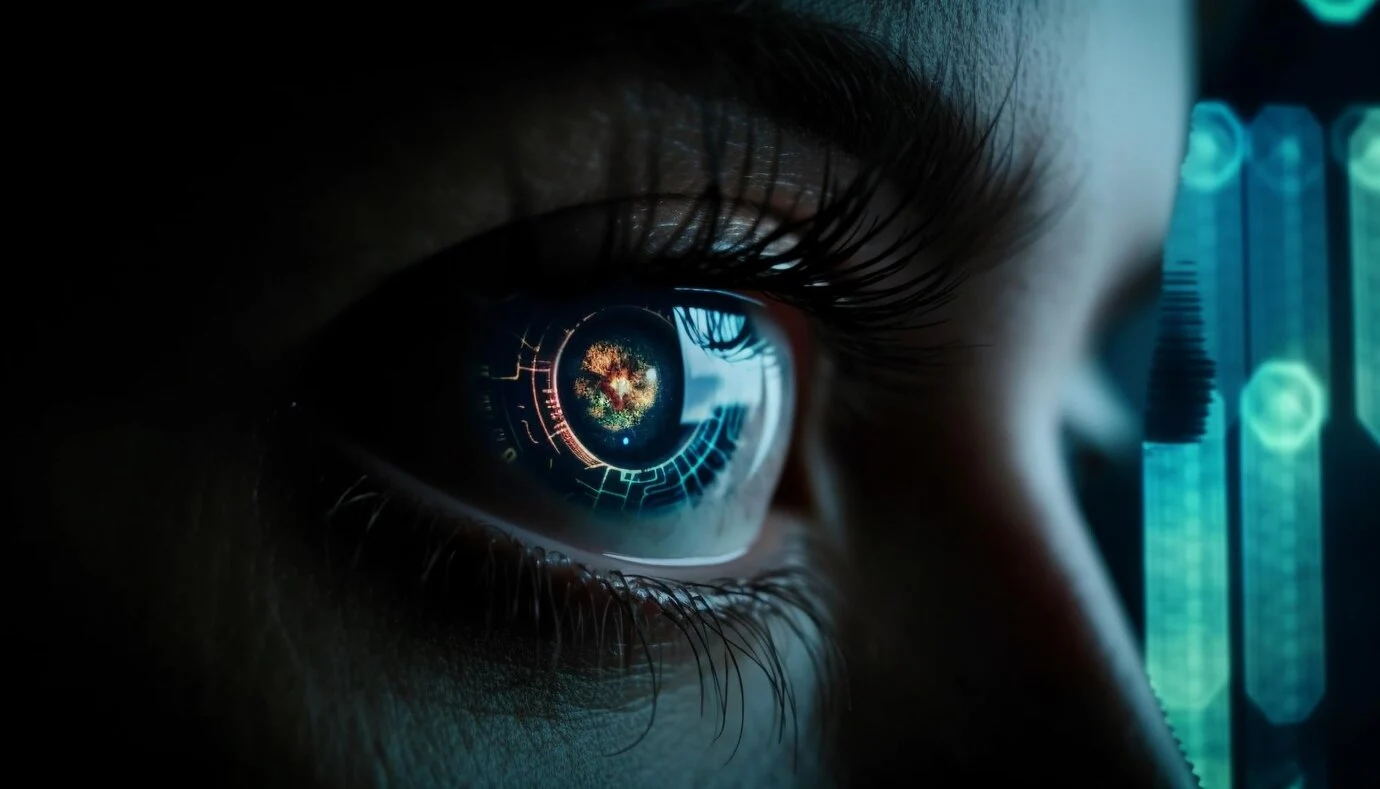You're strolling through a vibrant marketplace, not just seeing the bustling crowd and colorful stalls, but experiencing them. A tiny shimmering icon appears above a basket of mangoes, whispering their origin story – organic, sun-kissed from the city. You peer at a complex wall-hanging, and its history unfolds before your eyes – the weaver's tale, the meaning behind each symbol.
This is the future vision of Augmented Reality contact lenses, a future where the world whispers its secrets directly to your eyes.

AR contact lenses envision a future where digital information enhances our vision without getting in the way. These tiny marvels, nestled directly in your eyes, could revolutionize everything from everyday tasks to healthcare and entertainment.
How do augmented reality (AR) contact lenses work?
These cutting-edge lenses embed micro-displays and sensors directly into the eye. They project information onto your retina, blending seamlessly with your natural vision. Think of it as seeing holograms superimposed on the real world, but without needing any additional bulky hardware.
What can augmented reality (AR) contact lenses do?
The possibilities are as endless as your imagination! Imagine navigating city streets with real-time directions overlaid on your view. Need to translate a foreign language sign? Just look at it, and the translation appears. AR contact lenses could help athletes train better, doctors visualize medical scans in real-time during surgery and even enhance our gaming experiences with immersive, interactive environments
The current state of AR technology focuses on wearable devices like smart glasses.
Augmented reality (AR) holds immense promise for transforming our world, and smart glasses are seen as the key to unlocking its potential. But where exactly do we stand with this exciting technology? Let's peek into the current state of AR smart glasses:
.webp)
Promising Potential
Early Adopters: Several players like Microsoft (HoloLens), Google (Glass Enterprise Edition), and Facebook (Project Ray-Ban Stories) have released smart glasses, though primarily targeting specific industries like manufacturing, healthcare, and enterprise applications.
Improved Technology: Display tech is evolving, with advancements in micro LEDs and holographic displays offering brighter, crisp visuals. Processing power is also increasing, paving the way for more complex AR experiences.
Growing Applications: While gaming and entertainment were initial drivers, AR smart glasses are finding applications in diverse fields like navigation, education, remote assistance, and even mental health therapy.
Challenges and Roadblocks
Limited Functionality: Current smart glasses are often bulky, and expensive, and offer limited functionalities compared to smartphones. Battery life, field of view, and clunky input methods remain bottlenecks.
Privacy Concerns: The ability to overlay digital information onto the real world raises concerns about privacy, data security, and the potential for misuse.
Social and Ethical Issues: Questions about the impact of AR on human interaction, addiction, and the blurring of lines between physical and digital realities need careful consideration.
The Road Ahead
The future of AR smart glasses is bright, but several hurdles need to be overcome. Here's what to expect
Miniaturization and Design: Expect slimmer, sleeker, and more user-friendly devices that seamlessly integrate into daily life.
Software and Content Development: Robust software ecosystems and engaging content will be crucial for widespread adoption. Open platforms and collaboration are key.
Addressing Concerns: Ethical considerations, privacy regulations, and public education will be paramount to ensure responsible development and use of AR technology.
Final thoughts
In conclusion, while AR smart glasses are still in their nascent stages, the potential for positive impact is undeniable. By addressing the technical challenges, navigating ethical concerns, and fostering innovation, we can unlock a future where AR seamlessly enhances our lives in ways we can only imagine today.
As AR and contact lenses blur the lines between real and virtual, leaving us with augmented vision, we're forced to ponder a profound question: will future generations even remember, or perhaps even desire, the unadulterated experience of raw, unaugmented sight? Will the world become a permanent filter, or will we learn to cherish the moments where we simply see – truly see – without the veil of technology? Only time will tell if our future vision is one of enhanced perception or a gradual surrender to a world reshaped through the lens of augmentation.

.webp)